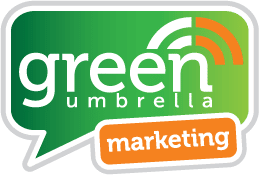How to Improve Website Copy to engage your audience

How to Improve Website Copy to engage your audience

The way you communicate online plays a pivotal role in connecting with your audiences, the language you use is a crucial element that can significantly impact engagement and understanding of who you are as a business, why you do what you do and most importantly whether or not you’re the one a prospect might want to do business with. This is especially true when it comes to your website copy. We’re constantly writing new social media content so this is naturally being reviewed, but when did you last update your website copy? A better question may even be when did you last read the copy that’s on your website? For many, this hasn’t happened since their website first went live!
If those two questions have left you thinking ‘Uh-oh’ and shifting uncomfortably in your chair then I suggest you get this task on your to-do list right now. As you review your website copy there are a few strategies you can implement that will help you improve language on your website and enhance overall communication, some of which you can do as you go. (Assuming you have access to make these kinds of updates!)
Know Your Audience – Who are you communicating with?
Understanding your target audience is the first step in improving your website copy. What are their preferences, interests, behaviours, their level of expertise. Tailor your language to resonate with your audience by using the language they use. This will all help you to create a connection and make you and your brand more relatable. If you’re thinking ‘Ok Christina, but how do I know what their preferences are?’ Take a look at your website analytics to see where you currently get most engagement on your website, social media interactions can also provide valuable insights into your audience’s preferences. Also think about how inbound enquiries communicate with you – what language is being used in the emails you receive and the conversations you have!

Focus on clarity – Keep it Concise
In theory, each webpage should have a minimum of 300 words of website copy to help Google (other search engines are available) understand what the page is about. This is a guideline – not a hard rule. Clarity is paramount when it comes to website language and less is more!
Users of your website will more likely scan over your website copy rather than read it beginning to end so make it easy for them to quickly grasp the purpose of your content. Do not over complicate it! Avoid industry jargon and technical language unless you’re confident your audience is using these terms themselves. Shorter sentences and paragraphs will improve readability and understanding as it will help break down complex information into easy to digest chunks. Use headings, bullet points, and visuals to enhance the overall structure and clarity of your website copy.
Write with an Active Voice
Want your content to be more engaging? Use Active voice! It will also enhance clarity of the points you are raising. To try and explain, passive voice is where something is acted upon, active voice highlight who’s carrying out the action. For example, “Our team write compelling website copy” is more direct and engaging than “Compelling website copy is written by our team.”
Be Consistent in language and tone
Consistency in language and tone across your online presence creates a cohesive brand identity. Your brand guidelines should ideally include tone, language style, and specific terms to be used. Using consistent language helps you build trust and reinforces your brand’s personality. This is where using AI to write your copy can be an issue as often what is produced isn’t in alignment with your brand voice. If you’re using a copywriter, make sure you communicate how the copy needs to sound!
How accessible is your website copy?
Can you be understood by a diverse audience? Think about those with different levels of literacy coming to your website as well as individuals with disabilities. Use clear and simple language, add alternative text for images, and ensure that your website can be navigated using screen readers.
Does your website copy tell a Story?
Stories sell! Engage your audience by incorporating storytelling into your website copy and overall content. Stories create connection and make information more memorable. Share success stories, case studies, or anecdotes that resonate with your audience. Storytelling adds a human touch to your website and makes things more personal, creating a deeper emotional connection with your website visitors.
Please remember to keep checking!
Improving your website copy is a continuous process that requires attention to detail and a commitment to effective communication. It’s something that should be diarised and looked at, not just written, and forgotten about. By understanding your audience and their changing needs, prioritising clarity, and engagement, maintaining consistency, and incorporating storytelling, you can create a compelling online presence that engages and resonates with your prospects. Language is a powerful tool, and using it strategically will not only enhance the overall user experience on your website, it will also take your brand to new heights.


Christina Robinson is the Managing Director of Green Umbrella Marketing. She provides Social Media Training and Coaching for a range of clients throughout the UK.
Share this!

